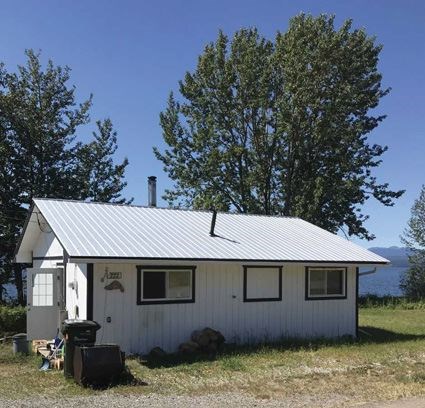He was told to never forget.
Human remains dating back about 500 years were found outside a young boy's house in Binche, near Fort St. James, in 1967 and today, a significant connection has been made with members in the community.
Barry Duncan was only 10 years old when he made his way home for the holidays after attending Lejac Residential School only to be greeted with news of the discovery.
"The elders told me about this. And I never did forget," Duncan said.
After the remains were found, they were reburied and found again during a housing excavation in 2013 where Duncan still resides today.
"I always knew they were there but I didn't know what they were all about," Duncan said.
"I took them to the RCMP and they checked for missing persons, but it was obvious that these bones were very old."
And old they were as Dr. Richard Lazenby from the Dept. of Anthropology at the University of Northern British Columbia soon discovered.
Lazenby has been working closely with Duncan since the remains were recovered four years ago.
Since then, a remarkable discovery was found for those living in Binche and in the surrounding communities of Tachie and Nak'azdli Band in Fort St. James.
Commonalities have been determined between community members today and the ancient skeletal remains.
According to Lazenby, at least four to five different individuals exist within the remains but there could be more.
"There are no individuals. Just a collection of bones," Lazenby said.
"This area could have once been a community cemetery at one time, but it is unknown for sure."
For Duncan, determining the identities of the remains means keeping their memory alive by finding our more about them and any possible links to members in the community.
"For me, it was a recognition of who they were. There's an old army saying, 'leave no man behind,' Duncan said.
"I didn't want to leave any of them behind."
For Lazenby, seeing the eagerness from Duncan and other community members made the community project one to remember.
Duncan requested assistance from Lazenby in understanding who they might have been and if there were any relationships to the present community.
"Barry and the Binche community were excited from the start," Lazenby said.
"They really wanted to pursue this. That's the fascinating thing about this story. It was the eagerness from the community."
And for Binche, this is an important time politically and culturally as the community commits to separating from a neighboring Tl'azt'en community, Tachie, in order to regain independence.
Binche is currently waiting for Canada's deputy minister to set a day of referendum and once approved, a ministerial order will be issued, creating a new band.
The community of Binche is pursuing to correct a 'historical mistake' committed by the Department of Indian Affairs (DIA) which led to a merging of Binche, Tachie, Middle River and Portage/Yekooche (now independent) in 1959.
"These ancient remains are vital. There is a connection as Binche moves on in the future," Lazenby said.
Several different studies were conducted on the remains, including an osteolgy which focuses on differences between bones and teeth relating to humans as individuals covering age, sex, size and lifestyle (diet, activity and health).
The osteology further concluded that there were five individuals present: one male, possibly three females (one elderly) and one of unknown sex.
Radiocarbon dating also determined that two samples from two different right femurs predates the arrival of non-First Nations.
DNA testing traced inheritance and maternal and paternal DNA.
Samples were collected from 35 community members using cheek swabs.
"This was amazing. To get that many samples from so many in the community," Lazenby said.
"And we definitely found a lot of diversity in our findings."
Through mtDNA testing, approximately 31 per cent of the Binche community members who provided samples share a common maternal ancestor with two samples from the remains and an additional 11.5 per cent share a common maternal ancestor with another one of the samples.
According to Lazenby, mtDNA does not discriminate direct lineal relationships, that is, mother-daughter. The commonality reflected may have originated 10,000 years ago.
One sample for example, is most common in North American First Nations among Algonkian peoples of Ontario and also frequent in the Middle East.
One male community member does share a common paternal ancestor with the Ancient BK1 sample among the remains through a tiny piece of DNA inherited only down the female line.
"Mitochondrial DNA also gives us a sense of when they came to North America.
In this case, N is most common among Finnish people, but also is known among the Yakuts of Central Siberia," Lazenby said.
Lazenby says that given this rarity, if BK1 lived prior to the arrival of settlers as is likely, it would be reasonable to infer a direct lineal father/son relationship, though the number of generations involved is unknowable.
However, he said, this cannot be stated with 100 per cent certainty.
For Duncan, learning the lineage of these remains has given him peace and a sense of closure.
"I still have the bones. We now want to look into facial reconstruction in the future," Duncan said.
"It feels so good, to have finally given them an identity."
For Lanzenby, it was the community that meant more than anything.
"For me and my skill set, it was all about finding their identity for the community," Lazenby said.
"To answer the many unanswered questions."



